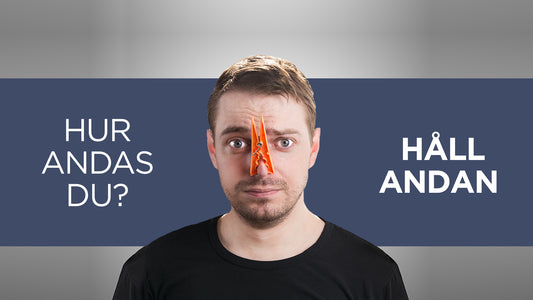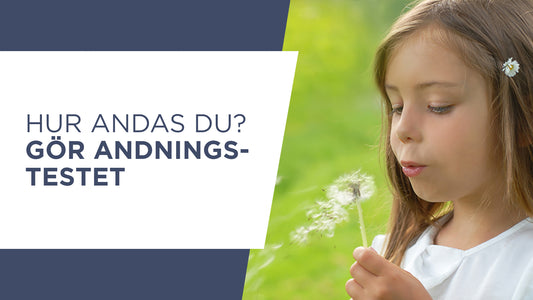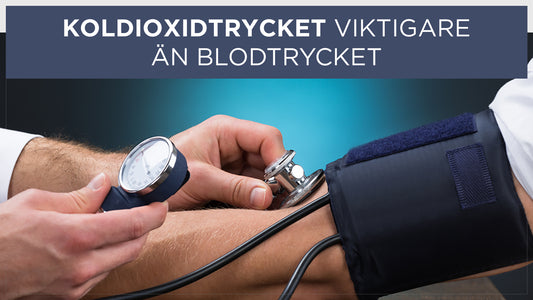En studie vid Karolinska institutet visade att tillväxten av stafylokocker var 1 000 gånger högre när bakterierna exponerades för vanlig luft (37 grader) under 24 timmar jämfört med exponering för 100 procent koldioxid. Sedan 1930-talet används koldioxid vid förpackning av livsmedel. Bröd, ost, kyckling, kaffe är exempel på produkter som förpackas i 100 procent koldioxid tack vare dess antibakteriella verkan.
Låga nivåer av koldioxid ökar infektionsrisken
Vid en försämrad andning sänker vi nivåerna av koldioxid i kroppen och skapar därmed en gynnsam miljö för bakterier att växa till sig och infektionsrisken ökar. Det finns sju sätta att öka kroppens nivåer av koldioxid. Det allra bästa är #1 andas långsamt och #2 fysisk aktivitet. #3-6 tillämpas vid behov av snabb effekt medan #7 inte är särskilt lämpligt då man på köpet oftast får en massa socker och annat som påverkar kroppen negativt.
- 1. Andas långsamt, exempelvis med hjälp av Relaxator
- 2. Fysisk aktivitet
- 3. Återandas en del av utandningsluften (andas i påse)
- 4. Upptag genom hud (bada, koldioxid-berikat bad)
- 5. Dricka bikarbonat (innehåller koldioxid och kan hjälpa ex. vid hosta)
- 6. Hålla andan
- 7. Kolsyrad dryck
|
Studie på koldioxid och bakterietillväxt
|
|
|---|---|
|
Titel
|
Carbon dioxide inhibits the growth rate of Staphylococcus aureus at body temperature
|
|
Tidskrift
|
Surg Endosc. 2005 Jan;19(1):91-4. Epub 2004 Nov 11.
|
|
Författare
|
Olsen KD, Kern EB, Westbrook PR.
|
|
Sammanfattning
|
BACKGROUND:
Since the 1930s, carbon dioxide (CO(2)) has been combined with cold storage for the preservation of food. However, its use for the prevention of surgical wound infection was long considered to be impractical. Now CO(2) is widely used during laparoscopic procedures, and a method has been developed to create a CO(2) atmosphere in an open wound. The aim of this study was to investigate the effect of CO(2) on the growth of Staphylococcus aureus at body temperature. METHODS: First, S. aureus inoculated on blood agar were exposed to pure CO(2) (100%), standard anaerobic gas (5% CO(2), 10% hydrogen, 85% nitrogen), or air at 37 degrees C for a period of 24 h; then a viable count of the bacteria was made. Second, S. aureus inoculated in brain-heart infusion broth and kept at 37 degrees C were exposed to CO(2) or air for 0, 2, 4, 6, and 8 h; then the optical density of the bacteria was measured. RESULTS: After 24 h, the number of S. aureus on blood agar was about 100 times lower in CO(2) than in anaerobic gas (p = 0.001) and about 1,000 times lower than in air (p = 0.001). Also, in broth, there were fewer bacteria with CO(2) than with air (p < 0.01). After 2 h, the number of bacteria was increased with air (p < 0.001) but not with CO(2) (p = 0.13). After 8 h, the optical density had increased from zero to 1.2 with air but it had increased only to 0.01 with CO(2) (p = 0.001). CONCLUSION: Pure CO(2) significantly decreased the growth rate of S. aureus at body temperature. The inhibitory effect of CO(2) increased exponentially with time. Its bacteriostatic effect may help to explain the low infection rates in patients who undergo laparoscopic procedures. |







